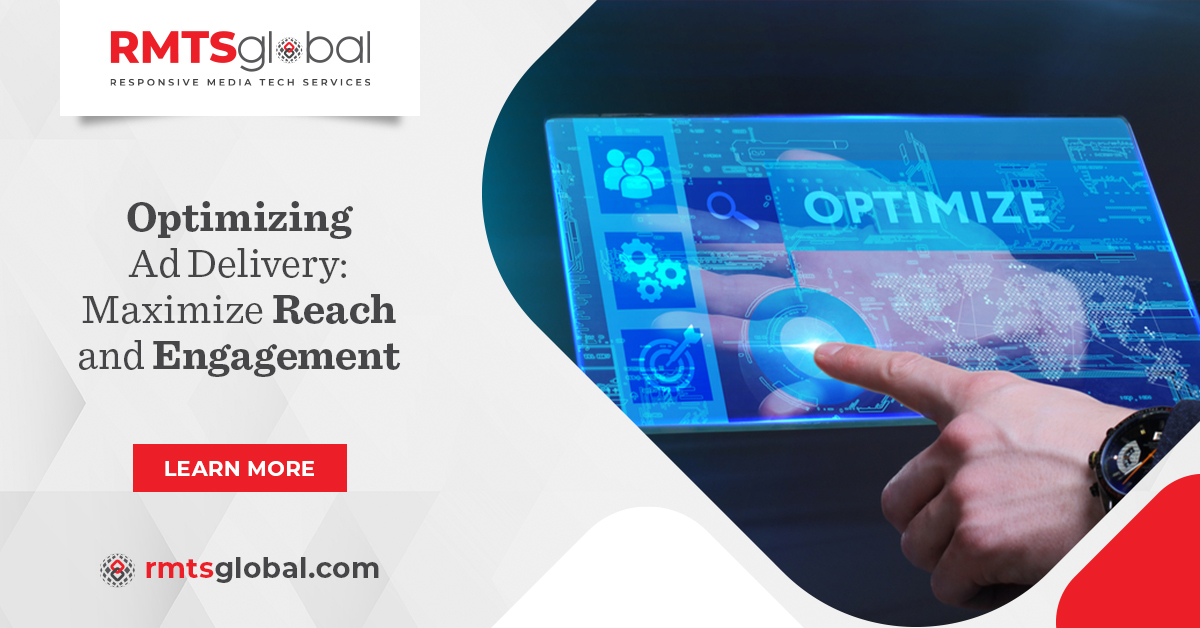Optimizing ad delivery is a critical aspect of running successful digital advertising campaigns. By understanding your target audience, segmenting effectively, employing ad retargeting, optimizing ad placements, leveraging programmatic advertising, and monitoring performance, you can refine your ad delivery strategies and maximize reach and engagement. Remember that ad delivery optimization is an ongoing process, and staying updated with industry trends, consumer behavior, and technological advancements is essential to maintaining a competitive edge. By continuously testing, iterating, and optimizing your ad delivery strategies, you can drive better results and achieve your advertising goals. This article explores effective strategies to optimize ad delivery and drive successful advertising campaigns.
- Understand Your Target Audience:
To optimize ad delivery, it’s crucial to have a deep understanding of your target audience. Conduct thorough research to identify their demographics, interests, online behavior, and preferences. Use tools such as Google Analytics, social media analytics, or third-party data providers to gather valuable insights. By understanding your audience’s characteristics and motivations, you can create ad campaigns that resonate with them and increase the chances of reaching the right users. Consider factors such as age, gender, location, interests, and purchasing behavior to tailor your messaging and creative elements.
- Segment Your Audience:
Segmenting your audience allows you to deliver targeted ads to specific groups based on their characteristics and preferences. This approach increases the relevance and effectiveness of your ads. Leverage data-driven segmentation techniques to identify distinct audience segments. Demographic segmentation involves categorizing users based on factors such as age, gender, and income. Behavioral segmentation focuses on user actions and interests, such as browsing history or previous purchase behavior. Contextual targeting analyzes the content and context of webpages to deliver ads that align with users’ current interests. By segmenting your audience, you can create personalized ad experiences that drive better engagement and conversions.
- Employ Ad Retargeting:
Ad retargeting, also known as remarketing, is a powerful strategy to optimize ad delivery. It involves displaying ads to users who have previously interacted with your website or shown interest in your products or services. By serving relevant ads to users who are already familiar with your brand, you can increase the likelihood of conversion. Implement retargeting pixels or cookies to track user behavior and deliver retargeted ads across various platforms and devices. Customize your retargeting campaigns based on specific user actions, such as abandoned shopping carts or website visits. By staying top-of-mind with potential customers, you can drive higher engagement and increase the chances of conversion.
- Optimize Ad Placements:
Strategic ad placements significantly impact ad performance. Experiment with different ad formats, sizes, and positions to find the optimal combination that generates maximum visibility and engagement. Consider the context and user experience of the webpages where your ads will appear. Ad placements above the fold or in highly visible areas tend to receive more attention. Test different placements, such as in-stream video ads, native ads, or display ads, to identify the most effective formats for your target audience. Additionally, consider ad viewability, ensuring that your ads are fully visible to users without being obstructed by other content. Continuously monitor and analyze the performance of different placements to refine your ad delivery strategy and maximize results.
- Leverage Programmatic Advertising:
Programmatic advertising is a data-driven approach to ad buying and placement. It automates the process and allows for real-time bidding and optimization. By leveraging programmatic advertising platforms, you can access a wide range of ad inventory and optimize ad delivery based on data-driven insights. Programmatic advertising offers granular targeting options, dynamic ad creative capabilities, and sophisticated optimization algorithms. Utilize programmatic platforms to define your target audience, set bidding strategies, and optimize campaign performance. The advanced targeting and optimization capabilities of programmatic advertising can help you reach the right users at the right time and achieve better results in your ad delivery efforts.
- Monitor and Analyze Performance:
Regularly monitor and analyze the performance of your ad campaigns to identify areas for improvement. Utilize ad analytics tools to measure key performance indicators (KPIs) such as click-through rates (CTRs), conversion rates, engagement metrics, and return on ad spend (ROAS). Analyzing these metrics will help you identify trends, understand user behavior, and make data-driven decisions to optimize your ad delivery strategies. Monitor the performance of different ad placements, targeting options, and creative variations to identify what works best for your audience. Continuously iterate and optimize your campaigns based on the insights gained from performance analysis.
In conclusion, optimizing ad delivery is a multifaceted process that requires careful consideration of various factors. By understanding your target audience, segmenting effectively, employing retargeting strategies, optimizing ad placements, leveraging programmatic advertising, and implementing quality control measures, you can maximize the reach and engagement of your ads. Additionally, factors such as ad frequency, geo-targeting, dayparting, ad creative optimization, audience exclusions, and ad placement exclusions contribute to the overall effectiveness of your campaigns. It’s crucial to continuously monitor and analyze performance data, conduct A/B testing, and make data-driven adjustments to ensure optimal results. By maintaining a proactive approach and implementing quality control measures throughout the ad delivery process, you can refine your strategies and achieve success in driving brand visibility, engagement, and conversions.
